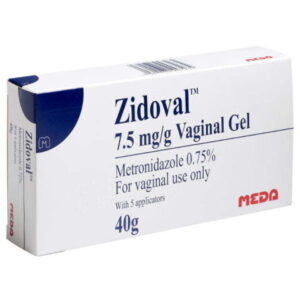What is Bacterial Vaginosis?
Bacterial vaginosis (BV) is a common bacterial infection which is estimated to affect 1 in 3 women at least once in their lifetime. However, it is possible for infections of bacterial vaginosis to reoccur within 6 months, even after being treated.
While it is not classed as a sexually transmitted infection, it can lower your vagina’s natural defence and increase your risk of contracting STIs such as Chlamydia. However, women can pass BV onto other female sexual partners.
BV carries a small risk of causing complications during pregnancy, including pelvic inflammatory disease, premature birth or miscarriage. In a majority of cases where a pregnant woman is infected with BV, no complications occur. If you notice a change in your vaginal discharge while you are pregnant, speak to your doctor or midwife.
What are the symptoms of Bacterial Vaginosis?
Bacterial Vaginosis causes similar symptoms to vaginal thrush, though there are a few differences between the two infections.
Symptoms of bacterial vaginosis may include:
- Pain when urinating
- Strong fishy odour (often after sex)
- Unusual thin, watery, grey or white vaginal discharge
Approximately half of women will not realise they have a BV infection as they may not experience any symptoms. In addition, bacterial vaginosis is not usually painful or itchy.
They key differences which set BV and thrush infections apart are the differences in the odour and discharge. Discharge, as is the result of vaginal thrush, does not usually smell and is often thick like cottage cheese, while discharge, as a result of a bacterial vaginosis infection, is often watery and emits a foul smell.
If you notice any changes in the smell or discharge of your vagina, speak to your doctor or pharmacist for advice on what might be causing the symptoms.
What causes Bacterial Vaginosis?
Put simply, bacterial vaginosis is often caused by a change in the pH balance of the vagina.
While it is easy to assume that poor hygiene, such as not washing often, can contribute to the development of BV, it’s often the complete opposite which causes the infection.
The vagina sustains a careful acidic balance. When this balance is disrupted, infections such as bacterial vaginosis and thrush can occur. Using vaginal deodorants, perfumed soaps, bubble baths and washing your underwear with strong detergents can upset the delicate balance, increasing the risk of developing bacterial vaginosis.
BV can also be triggered by sexual intercourse, especially with male partners. This is often due to the alkaline nature of semen, which can affect the natural pH balance of the vagina. Changing partners can also increase the risk of developing an infection. If you notice that you suffer from BV after having sex, consider wearing a condom to prevent future infections.
Women with same-sex partners can also pass on bacterial vaginosis to other women. If this happens, it is possible that both women will need to be treated for bacterial vaginosis.
Periods can also interfere with the pH balance of the vagina which can increase the likeliness of a BV infection, as can contraception such as IUD.
How is Bacterial Vaginosis diagnosed?
If you suspect you have BV, you should arrange an appointment with your GP or a sexual health clinic to rule out any possibility that the symptoms you are experiencing are the result of an STI.
During your appointment, a doctor will ask about your symptoms and a doctor or nurse may examine your vagina.
A sample of discharge may be taken using a cotton bud, which can be used to test for infections. This is unlikely to hurt but may feel uncomfortable.
Your doctor will then discuss an appropriate course of treatment with you.
How is Bacterial Vaginosis treated?
Bacterial vaginosis is usually treated with a course of antibiotics, such as Metronidazole. This treatment is available in the form of oral tablets or a topical vaginal gel.
It is possible for BV to return, even after treating the infection. If this is the case, a longer course of antibiotics may be prescribed.
If any same-sex partners exhibit the symptoms of BV, they too may require treatment.
While undergoing treatment for bacterial vaginosis, it is important to avoid using hygiene products which may affect the pH of your vagina and cause a recurrent infection.
It is important to be treated for bacterial vaginosis as the condition can cause complications such as pelvic inflammatory disease, premature birth and miscarriage in pregnant women, and increases the risk of contracting sexually transmitted infections.
How can I prevent future infections of Bacterial Vaginosis?
Bacterial Vaginosis can be prevented by making changes to your washing regime.
Doing the following may reduce your symptoms and prevent future BV infections:
- Avoid using perfumed hygiene products inside and around the vagina
- Having showers instead of baths
- Not using vaginal deodorants, washes or douches
- Using condoms, if your BV is triggered by sex
- Wash the genital area with water and plain soap
- Washing underwear in softer detergents
WOMEN'S HEALTH
WOMEN'S HEALTH



